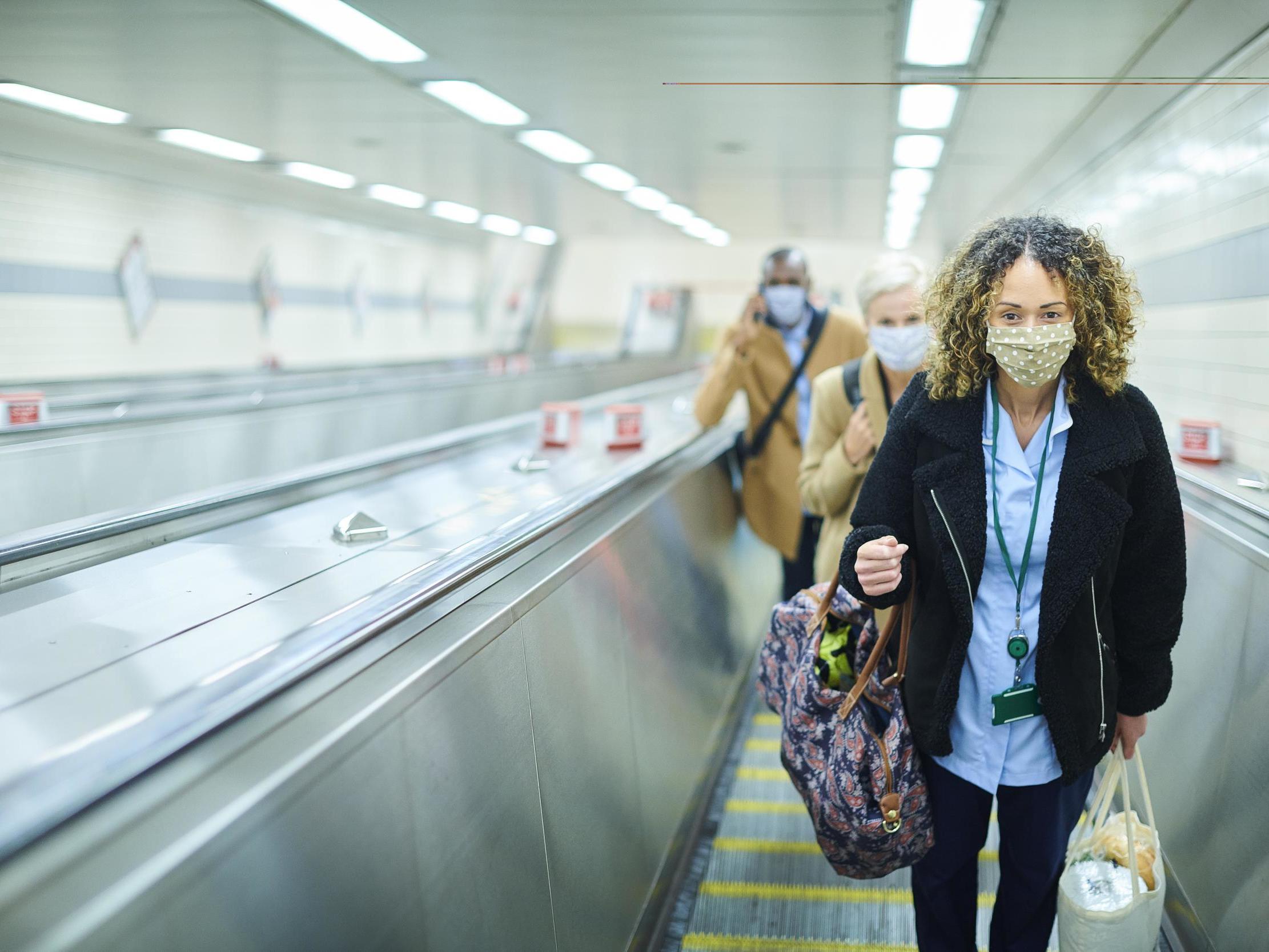Face masks: Are coverings with ear loops less safe than other models?
The government is not using 50 million masks for NHS England after they were found to fit badly

On 8 August, the rules on face masks in England will change once again: the public now have to wear them in all indoor settings where you may come into contact with people you “wouldn’t normally see”.
The government says this includes places like cinemas, galleries, or museums, in addition to the mandatory wearing already in place in shops and on public transport.
But as mask wearing becomes more commonplace in society, many of us are still learning why they are useful, how to wear them to be most effective, and whether some styles are safer.
On Friday 7 August it was announced that fifty million face masks bought by the UK government in April were no longer going to be used by the NHS because of safety concerns over fit.
The government says the masks, which use ear-loop fastenings rather than head loops, may not fit tightly enough. This is despite them having cost the taxpayer £252m.
So should members of the public be worried about face mask fit or swapping out ear-loop masks for different styles?
How should you wear a face covering to ensure safety?
The government says that in the context of the Covid-19 outbreak a face covering is something, which safely “covers the nose and mouth”. On its website, it says: “You can buy reusable or single-use face coverings. You may also use a scarf, bandana, religious garment or hand-made cloth covering but these must securely fit round the side of the face.”
It also gives a check-list for ensuring your face mask is suitable: make sure that it covers your nose and mouth while allowing you to breathe comfortably, fits comfortably but securely against the side of the face, is made of a material that you find to be comfortable and breathable, such as cotton, and is ideally include at least two layers of fabric (the World Health Organisation recommends three depending on the fabric used).
Unless disposable, it should be “able to be washed with other items of laundry according to fabric washing instructions and dried without causing the face covering to be damaged,” the guidance continues.
In terms of whether it should be ear-loops or other, the government says either is suitable.
So why are the NHS not using these masks?
This is because face coverings for the general population to wear in the community are not required to be of the same standard as PPE (personal protective equipment).
Dr Simon Clarke, associate professor in cellular microbiology at the University of Reading, says: “NHS trusts spend a lot of time getting the right mask for people, fit is crucial and even having a couple of days’ beard growth can mean that a mask no longer fits someone. With that in mind, it’s no surprise that a badly designed mask is of no use.
“[But] it’s an oversimplification to say ear loops [are] bad. The masks in question were bought as FFP2 masks, not general masks or coverings. FFP2 masks need to be worn in places like Intensive Care Units, where there are lots of aerosols generated, so the mask needs to be fitted tight to the face to protect the wearer. The ear loops don’t fit the mask tightly enough.”
Rankin unveils portraits of NHS workers on the coronavirus frontline
Show all 12Robert Dingwall, professor of sociology at Nottingham Trent University and on the Department of Health’s Nervtag (New and Emerging Respiratory Virus Threats Group), which advises the chief medical officer on the threat posed by new viruses, agrees: “Basically, NHS stuff need a much higher degree of protection because they are dealing with a whole range of bacteria and viruses and wearing masks to protect themselves against airborne transmission of any of these.
“The masks the government has bought will just leak a lot around the edge and won’t do that job.”
Do I need to swap my mask?
Unless you are working on the frontline or in the NHS, and your mask is just to be worn in public places to comply with new laws, you are probably fine to wear a mask with ear loops (as long as it meets other government specifications).
Dr Clarke says: “Masks with ear loops are still being worn by general hospital staff including nurses in clinics and on wards, with no problem, as these are environments where they don’t need to be so tightly fitting, so I’d say the general public don’t need to worry. I would still advise that people need to be conscious of the fit of their face covering.”
In fact Mr Dingwall says the government could “probably sell off these masks to the general public” if they cannot be used by medical staff.
He explains: “In the community, face coverings are not intended to protect the wearer – the likelihood of meeting an infected person is very small so it doesn’t really matter if they leak.
“What they are intended to do is to block larger droplets that might be exhaled by someone who is infectious but is either never going to develop symptoms or will develop them within the next couple of days. Smaller particles may leak around the edge but may not carry enough virus to be infective. Face coverings are intended to protect other people from the wearer.”
Subscribe to Independent Premium to bookmark this article
Want to bookmark your favourite articles and stories to read or reference later? Start your Independent Premium subscription today.

Join our commenting forum
Join thought-provoking conversations, follow other Independent readers and see their replies